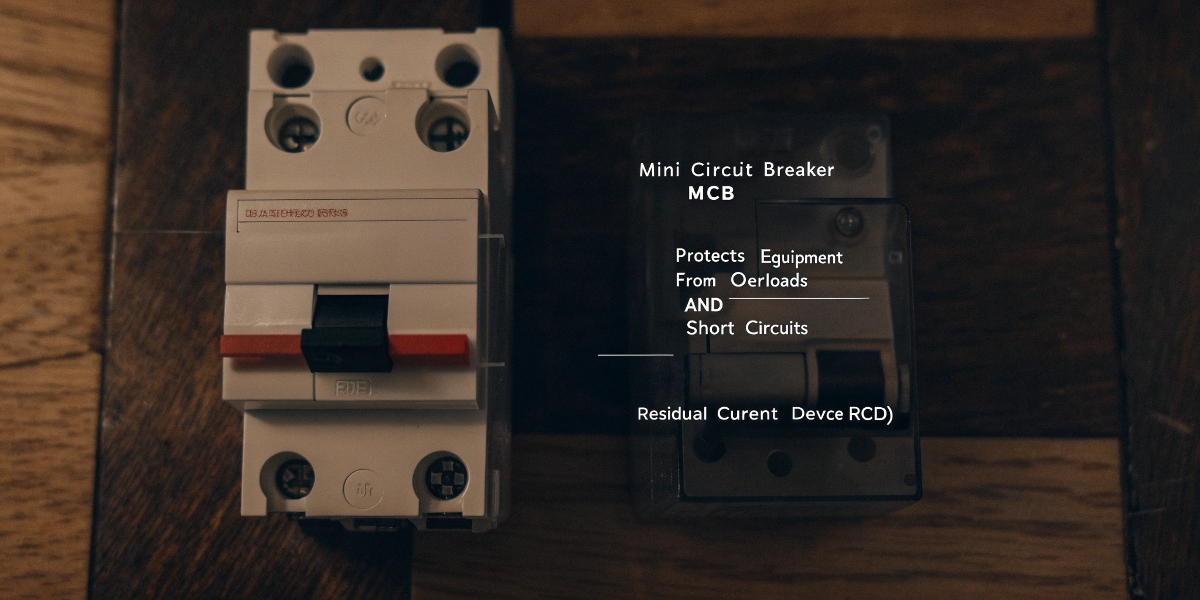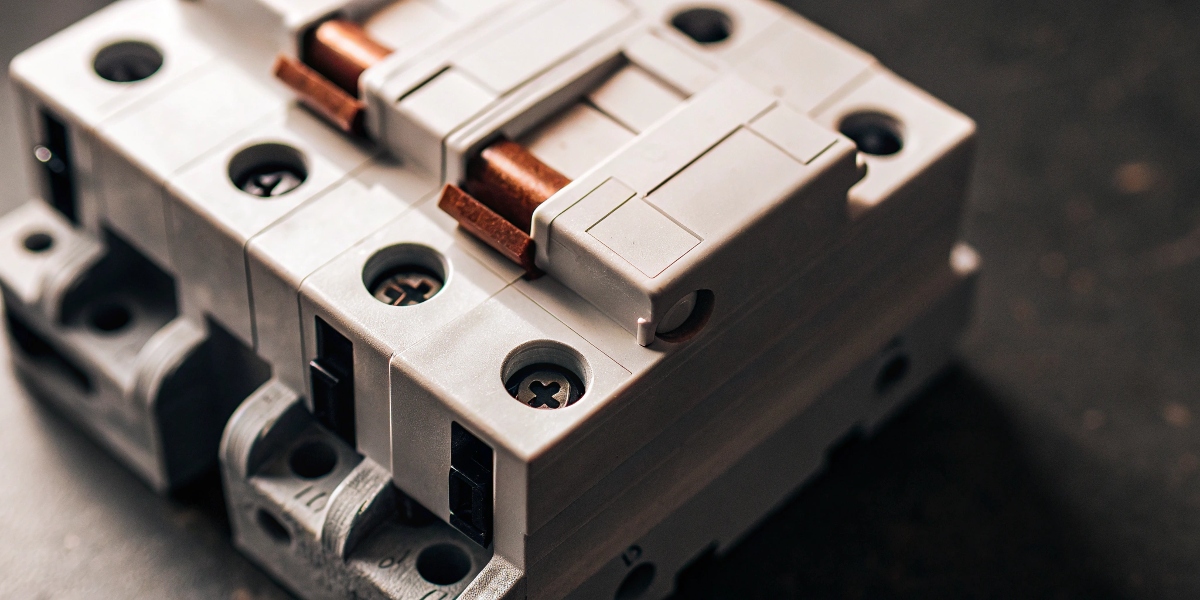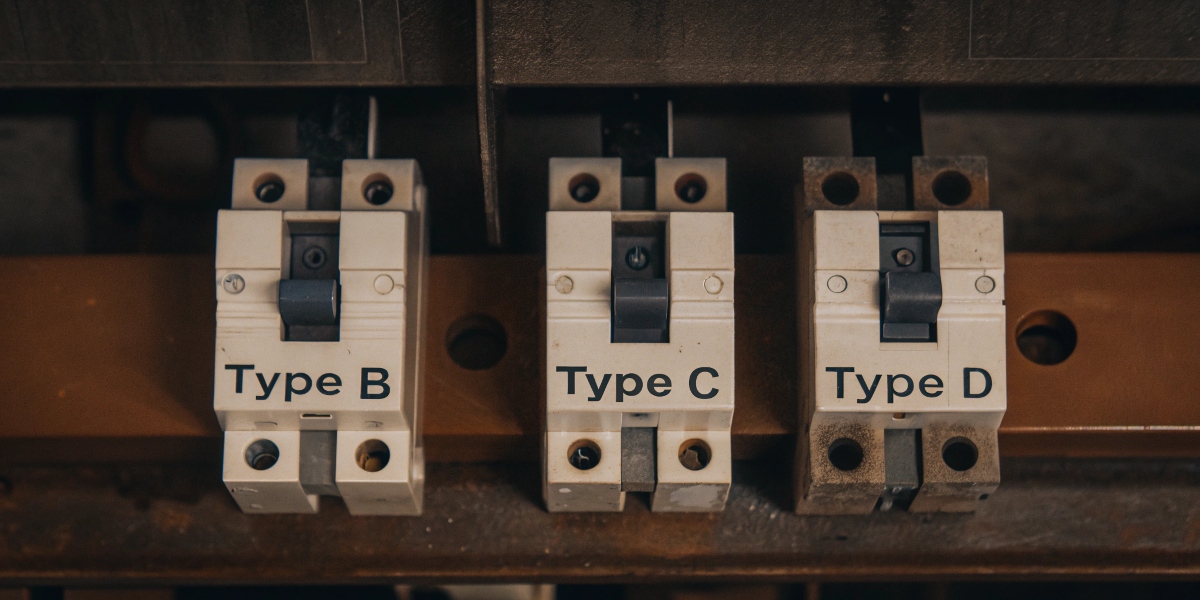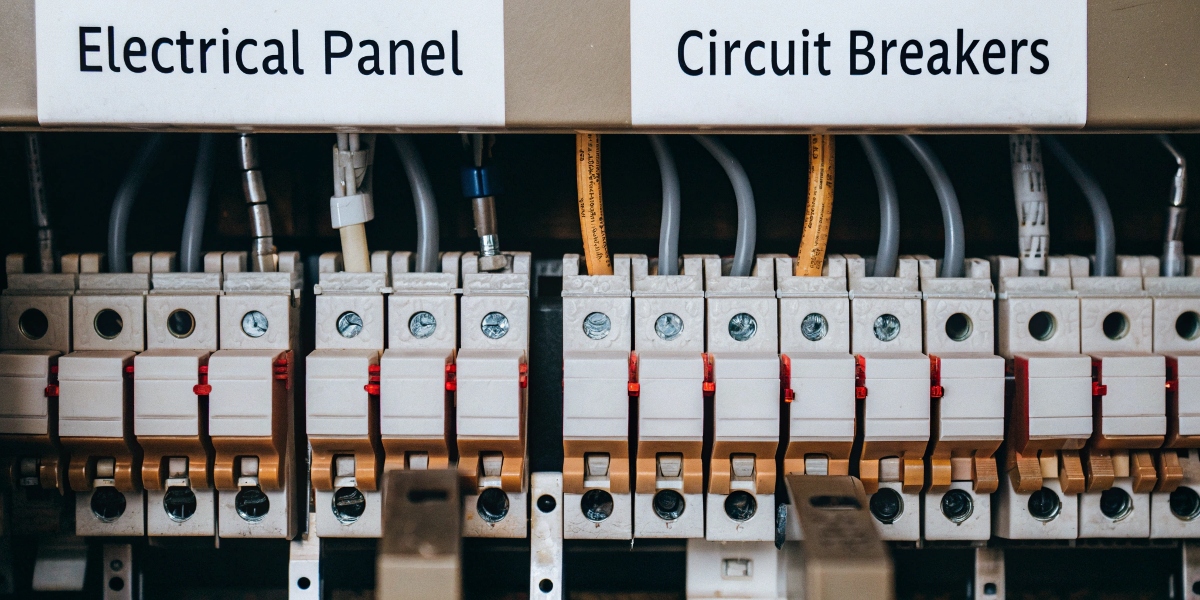What is the difference between a mini circuit breaker and a RCD?

Are you confused about electrical protection? Using the wrong device can damage equipment or even cause serious injury. I'll explain the key differences to keep your projects safe and reliable.
A mini circuit breaker (MCB) protects equipment from overloads and short circuits. A residual current device (RCD) protects people from electric shock. They have different but equally important safety jobs in any electrical installation, and you often need both for complete protection.

Understanding this basic difference is the first step. But to make the right choice for your projects, you need to know more about each device. I remember a project early in my career where this confusion led to a costly mistake. Let's dig deeper so you can avoid that. First, let's break down the MCB.
What exactly is a miniature circuit breaker?
Worried about your circuits overheating? An overloaded wire1 can easily start a fire. A miniature circuit breaker is your first and most important line of defense against this common electrical hazard.
A miniature circuit breaker, or MCB, is an automatic switch. It protects an electrical circuit from damage caused by too much current from an overload or a short circuit. It simply trips to cut the power, and you can reset it manually after you fix the problem.

An MCB's main job is to protect the wiring and the appliances connected to the circuit. Think of it as a smart, reusable fuse. Back in the day, if a circuit was overloaded, a thin wire inside a fuse would melt and you'd have to replace it. An MCB does the same job but is much better. You just flip a switch to reset it. For a purchasing manager like yourself, this means lower maintenance and replacement costs.
Inside every MCB, there are two key parts that make it work:
How an MCB Works
- Thermal Protection: This part protects against overloads. An overload happens when you plug too many appliances into one circuit, drawing more current than the wire is built for. A bimetallic strip inside the MCB heats up slowly, bends, and trips the switch. This prevents the circuit's wiring from dangerously overheating.
- Magnetic Protection: This protects against short circuits. A short circuit is a much more dangerous fault where currents can surge to hundreds of times the normal level instantly. A magnetic coil inside the MCB detects this huge surge and trips the breaker immediately to prevent fires or explosions.
The key thing to remember is that an MCB cares about the equipment and the wires. It does not protect people from electric shock2.
What are the three main types of miniature circuit breakers?
Does your circuit breaker trip for no reason, or worse, not trip when it should? Choosing the wrong type of MCB for the job is often the cause of these problems.
The three main types of MCBs are Type B, Type C, and Type D. Each one is designed for different kinds of electrical loads. Type B is for homes, Type C is for commercial uses, and Type D is for heavy industrial equipment with very high starting currents.

The "Type" of an MCB tells you its tripping curve, which means how quickly it will react to a certain level of overcurrent. Matching the type to the load is critical for a reliable system. If you use the wrong one, you might get "nuisance tripping3" where the breaker cuts power unnecessarily, or it might fail to trip fast enough in a real fault.
Here’s a simple breakdown to help you choose the right one for your projects. As a purchasing manager, getting this detail right saves your company from costly callbacks and builds a reputation for quality work.
| MCB Type | Tripping Current (x Rated Current) | Common Applications |
|---|---|---|
| Type B | 3 to 5 times | Resistive Loads: Homes, lighting circuits, and socket outlets. |
| Type C | 5 to 10 times | Inductive Loads: Commercial uses, small motors, fans, fluorescent lighting. |
| Type D | 10 to 20 times | High Inductive Loads: Industrial use, large motors, transformers, X-ray machines. |
For example, I once consulted on a project for a new office building. The contractor used Type B breakers everywhere to save a little money. But the office lighting circuits had a small inrush current when switched on, causing the breakers to trip every morning. We had to replace them all with Type C breakers, which are designed for that kind of load. It was an expensive lesson in paying attention to the details.
So, when should you use a miniature circuit breaker?
Are you setting up a new electrical panel4? Not knowing exactly where an MCB goes can put your entire system's safety at risk. Let's make its proper application perfectly clear.
You should use a miniature circuit breaker in nearly every final sub-circuit of a modern electrical system. It is the standard device for protecting specific circuits, like those for lights, wall sockets in a room, or a single appliance like a water heater.

The main place you will see and use MCBs is inside a distribution board5, also known as a consumer unit or breaker panel. The main power cable comes into the board, and then it is split into many smaller circuits. Each one of those circuits is protected by its own MCB.
This is a huge advantage. It's called "sectionalizing6." If there is a fault in your kitchen, only the kitchen's MCB will trip. The lights and power in the rest of the house will stay on. This makes it much easier to find the problem and it's far more convenient than an old system where one fuse could black out the entire building.
For your projects, think about it like this:
- In a residence: You will buy and install separate MCBs for the living room sockets, the bedroom lights, the air conditioning unit, and the electric stove. Each line gets its own protection.
- In a commercial building: You'll use different MCBs for the office lighting grid, the computer power outlets, and the motor in the ventilation system.
MCBs are absolutely essential for overcurrent protection. But remember, they are only one part of the safety puzzle7. They protect the system, but what protects the people using it? That question leads us directly to the RCD.
Are an RCD and a circuit breaker the same thing, then?
Do you think your circuits are fully protected with just a circuit breaker? This common misunderstanding leaves people wide open to fatal electric shocks. Let's finally clear up this critical difference.
No, they are not the same thing at all. A circuit breaker (MCB) protects equipment from overcurrents. A Residual Current Device (RCD) protects people from electric shocks. An RCD works by detecting tiny leaks of current to the earth, something an MCB would never notice.

Here's the simplest way I can explain it. An RCD doesn't care about overcurrent. Its only job is to watch for safety. It works by measuring the current flowing out on the live wire and comparing it to the current flowing back on the neutral wire. In a healthy circuit, these two should be perfectly balanced.
But if you touch a faulty appliance, a small amount of current will leak through your body to the ground. The RCD detects this tiny imbalance—as small as 30 milliamps—and cuts the power in a fraction of a second, long before it can cause serious harm. An MCB, which waits for a huge overload, would not even see this small leak.
Think of it like this:
- An MCB is the security guard for the building. It stops big threats like someone trying to knock down the door (a short circuit).
- An RCD is a life-guard for the people. It reacts to a person in trouble, like someone falling into the water (electric shock).
In many countries, it is now law to have RCD protection on circuits that power outlets, especially in high-risk areas like kitchens and bathrooms. As a purchasing manager, offering products with RCD protection, or combined RCBOs (which are an MCB and RCD in one unit), shows your customers you prioritize safety. It builds trust and sets your brand apart as a supplier of modern, safe solutions.
Conclusion
In short, MCBs protect equipment from overcurrents, while RCDs protect people from shocks. Use both for complete circuit safety, choosing the right type and rating for each specific need.
-
Learn about the risks associated with overloaded wires and how to prevent them in your projects. ↩
-
Learn about the risks of electric shock and the measures to ensure safety in electrical installations. ↩
-
Investigate the reasons behind nuisance tripping and how to avoid it in your electrical systems. ↩
-
Understand the role of electrical panels in managing power distribution and safety in buildings. ↩
-
Gain insights into the function of distribution boards and their importance in circuit management. ↩
-
Understand the concept of sectionalizing and how it enhances safety and convenience in electrical setups. ↩
-
Explore the various elements that contribute to a safe electrical system and their interconnections. ↩

